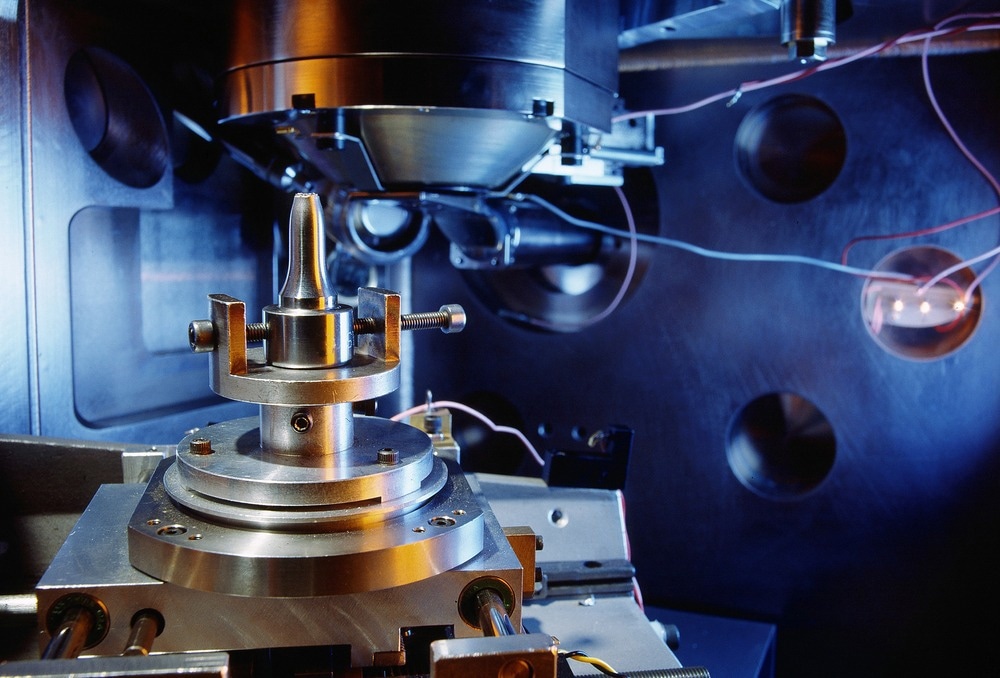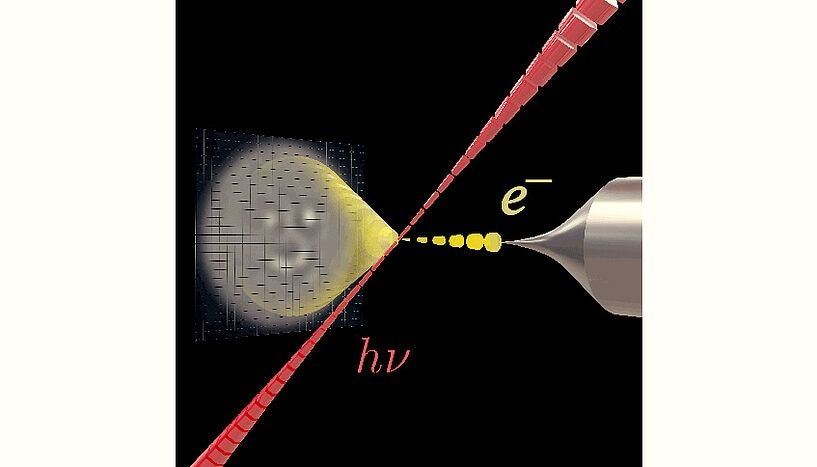A novel method that integrates electron microscopy and laser technology allows for programmable, arbitrary electron beam shaping. It has the ability to be used to improve electron optics and adaptive electron microscopy by increasing sensitivity while decreasing beam-induced damage.

Image Credit: Bildagentur Zoonar GmbH/Shutterstock.com
Scientists at the University of Vienna and the University of Siegen have now proved this fundamental and disruptive technology. The findings have been reported in the journal PRX.
Standard imaging technologies face substantial restrictions in imaging quality when light travels through turbulent or dense material, such as the Earth’s atmosphere or a millimeter-thick tissue. Researchers use deformable mirrors in the optical path of a telescope or microscope to cancel out the unwanted effects. Several discoveries in astronomy and deep-tissue imaging have resulted from these so-called adaptive optics.
This degree of control, unfortunately, has not yet been accomplished in electron optics, despite the fact that several applications in materials science and structural biology necessitate it. In electron optics, researchers employ electron beams rather than light to view structures with atomic resolution. Static electromagnetic fields are commonly utilized to guide and target electron beams.
Scientists from the University of Vienna (at the Faculty of Physics and the Max Perutz Labs) and the University of Siegen have now demonstrated that it is feasible to deflect electron beams almost arbitrarily by employing high-intensity, shaped light fields that repel electrons.

Recent experiments at the University of Vienna show that light (red) can be used to arbitrarily shape electron beams (yellow), opening new possibilities in electron microscopy and metrology. Image Credit: © stefaneder.at, the University of Vienna.
This effect was predicted by Kapitza and Dirac in 1933, and the first experimental demonstrations (Bucksbaum et al., 1988; Freimund et al., 2001) were made possible with the introduction of high-intensity pulsed lasers. The study was published in the journal PRX.
The Vienna-based research is now utilizing human power to shape light. A spatial light modulator shapes a laser pulse, which interacts with a counter-propagating, synchronized pulsed electron beam in a modified scanning electron microscope. This allows for the imprinting of transverse phase alterations to the electron wave on demand, allowing for unprecedented control over electron beams.
The new technology’s potential is highlighted by manufacturing convex and concave electron lenses and intricate electron intensity distributions.
We are writing with the laser beam in the transverse phase of the electron wave. Our experiments pave the way for wavefront shaping in pulsed electron microscopes with thousands of programmable pixels. In the future, parts of your electron microscope may be made from light.
Marius Constantin Chirita Mihaila, Study Lead Author, University of Vienna
Unlike competing electron-shaping technologies, the scheme is programmable and prevents losses, inelastic scattering, and instabilities caused by material diffraction element degradation.
Our shaping technique enables aberration correction and adaptive imaging in pulsed electron microscopes. It can be used to adjust your microscope to the specimens you study to maximize sensitivity.
Thomas Juffmann, Head of the Group, University of Vienna
Journal Reference
Mihaila, M. C. C., et al. (2022) Transverse Electron-Beam Shaping with Light. Physical Review X. doi.org/10.1103/PhysRevX.12.031043.